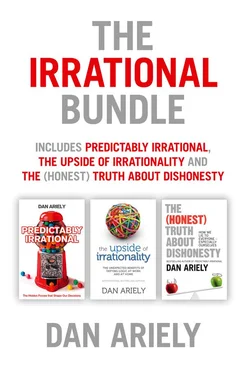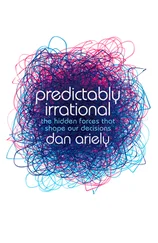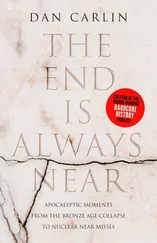But how could they manipulate me? I suspect it’s because the Economist’s marketing wizards (and I could just picture them in their school ties and blazers) knew something important about human behavior: humans rarely choose things in absolute terms. We don’t have an internal value meter that tells us how much things are worth. Rather, we focus on the relative advantage of one thing over another, and estimate value accordingly. (For instance, we don’t know how much a six-cylinder car is worth, but we can assume it’s more expensive than the four-cylinder model.)
In the case of the Economist, I may not have known whether the Internet-only subscription at $59 was a better deal than the print-only option at $125. But I certainly knew that the print-and-Internet option for $125 was better than the print-only option at $125. In fact, you could reasonably deduce that in the combination package, the Internet subscription is FREE! “It’s a bloody steal—go for it, governor!” I could almost hear them shout from the riverbanks of the Thames. And I have to admit, if I had been inclined to subscribe I probably would have taken the package deal myself. (Later, when I tested the offer on a large number of participants, the vast majority preferred the Internet-and-print deal.)
So what was going on here? Let me start with a fundamental observation: most people don’t know what they want unless they see it in context. We don’t know what kind of racing bike we want—until we see a champ in the Tour de France ratcheting the gears on a particular model. We don’t know what kind of speaker system we like—until we hear a set of speakers that sounds better than the previous one. We don’t even know what we want to do with our lives—until we find a relative or a friend who is doing just what we think we should be doing. Everything is relative, and that’s the point. Like an airplane pilot landing in the dark, we want runway lights on either side of us, guiding us to the place where we can touch down our wheels.
In the case of the Economist, the decision between the Internet-only and print-only options would take a bit of thinking. Thinking is difficult and sometimes unpleasant. So the Economist’s marketers offered us a no-brainer: relative to the print-only option, the print-and-Internet option looks clearly superior.
The geniuses at the Economist aren’t the only ones who understand the importance of relativity. Take Sam, the television salesman. He plays the same general type of trick on us when he decides which televisions to put together on display:
36-inch Panasonic for $690
42-inch Toshiba for $850
50-inch Philips for $1,480
Which one would you choose? In this case, Sam knows that customers find it difficult to compute the value of different options. (Who really knows if the Panasonic at $690 is a better deal than the Philips at $1,480?) But Sam also knows that given three choices, most people will take the middle choice (as in landing your plane between the runway lights). So guess which television Sam prices as the middle option? That’s right—the one he wants to sell!
Of course, Sam is not alone in his cleverness. The New York Times ran a story recently about Gregg Rapp, a restaurant consultant, who gets paid to work out the pricing for menus. He knows, for instance, how lamb sold this year as opposed to last year; whether lamb did better paired with squash or with risotto; and whether orders decreased when the price of the main course was hiked from $39 to $41.
One thing Rapp has learned is that high-priced entrées on the menu boost revenue for the restaurant—even if no one buys them. Why? Because even though people generally won’t buy the most expensive dish on the menu, they will order the second most expensive dish. Thus, by creating an expensive dish, a restaurateur can lure customers into ordering the second most expensive choice (which can be cleverly engineered to deliver a higher profit margin). 1
SO LET’S RUN through the Economist’s sleight of hand in slow motion.
As you recall, the choices were:
1. Internet-only subscription for $59.
2. Print-only subscription for $125.
3. Print-and-Internet subscription for $125.
When I gave these options to 100 students at MIT’s Sloan School of Management, they opted as follows:
1. Internet-only subscription for $59—16 students
2. Print-only subscription for $125—zero students
3. Print-and-Internet subscription for $125—84 students
So far these Sloan MBAs are smart cookies. They all saw the advantage in the print-and-Internet offer over the print-only offer. But were they influenced by the mere presence of the print-only option (which I will henceforth, and for good reason, call the “decoy”). In other words, suppose that I removed the decoy so that the choices would be the ones seen in the figure below:
Would the students respond as before (16 for the Internet only and 84 for the combination)?
Certainly they would react the same way, wouldn’t they? After all, the option I took out was one that no one selected, so it should make no difference. Right?
Au contraire! This time, 68 of the students chose the Internet-only option for $59, up from 16 before. And only 32 chose the combination subscription for $125, down from 84 before. * Конец ознакомительного фрагмента. Текст предоставлен ООО «ЛитРес». Прочитайте эту книгу целиком, купив полную легальную версию на ЛитРес. Безопасно оплатить книгу можно банковской картой Visa, MasterCard, Maestro, со счета мобильного телефона, с платежного терминала, в салоне МТС или Связной, через PayPal, WebMoney, Яндекс.Деньги, QIWI Кошелек, бонусными картами или другим удобным Вам способом.
What could have possibly changed their minds? Nothing rational, I assure you. It was the mere presence of the decoy that sent 84 of them to the print-and-Internet option (and 16 to the Internet-only option). And the absence of the decoy had them choosing differently, with 32 for print-and-Internet and 68 for Internet-only.
This is not only irrational but predictably irrational as well. Why? I’m glad you asked.
LET ME OFFER you this visual demonstration of relativity.
As you can see, the middle circle can’t seem to stay the same size. When placed among the larger circles, it gets smaller. When placed among the smaller circles, it grows bigger. The middle circle is the same size in both positions, of course, but it appears to change depending on what we place next to it.
This might be a mere curiosity, but for the fact that it mirrors the way the mind is wired: we are always looking at the things around us in relation to others. We can’t help it. This holds true not only for physical things—toasters, bicycles, puppies, restaurant entrées, and spouses—but for experiences such as vacations and educational options, and for ephemeral things as well: emotions, attitudes, and points of view.
We always compare jobs with jobs, vacations with vacations, lovers with lovers, and wines with wines. All this relativity reminds me of a line from the film Crocodile Dundee, when a street hoodlum pulls a switchblade against our hero, Paul Hogan. “You call that a knife?” says Hogan incredulously, withdrawing a bowie blade from the back of his boot. “Now this,” he says with a sly grin, “is a knife.”
RELATIVITY IS (RELATIVELY) easy to understand. But there’s one aspect of relativity that consistently trips us up. It’s this: we not only tend to compare things with one another but also tend to focus on comparing things that are easily comparable—and avoid comparing things that cannot be compared easily.
Читать дальше












